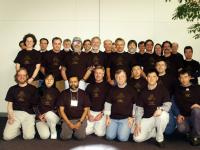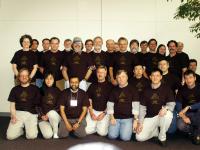

The Pacific Upwelling and Mixing Physics (PUMP) experiment is a process study designed to improve our understanding of the complex of mechanisms that connect the thermocline to the surface in the equatorial Pacific cold tongue. Its goal is to observe and understand the interaction of upwelling and mixing with each other and with the larger-scale equatorial current system. Its premises are, first, that the least understood contributions to the modulation of equatorial SST are upwelling and mixing, and second, that climate-scale ocean models are now ready to exploit realistic vertical exchange processes, but need adequate observational guidance.
The outcome of PUMP will be advancements in our ability to diagnose and model both the mean state of the coupled climate system in the tropics and its interannual and interdecadal variability.
PUMP is being organized under US CLIVAR. A full description is given in the Science and Implementation Plan (57 pages, 1.7Mb) (Revised January 2005).
A 1-page summary of the plan is here.
Comments are welcome: William.S.Kessler@noaa.gov
Photos of the May 2003 workshop participants: 

Photo at the Ocean Sciences meeting (Jan 2004)
 |
Dr. William S. Kessler
NOAA / PMEL / OCRD 7600 Sand Point Way NE Seattle WA 98115 USA |
Tel: 206-526-6221
Fax: 206-526-6744 E-mail: william.s.kessler@noaa.gov |
| See also: | Kessler home page PMEL home page | |